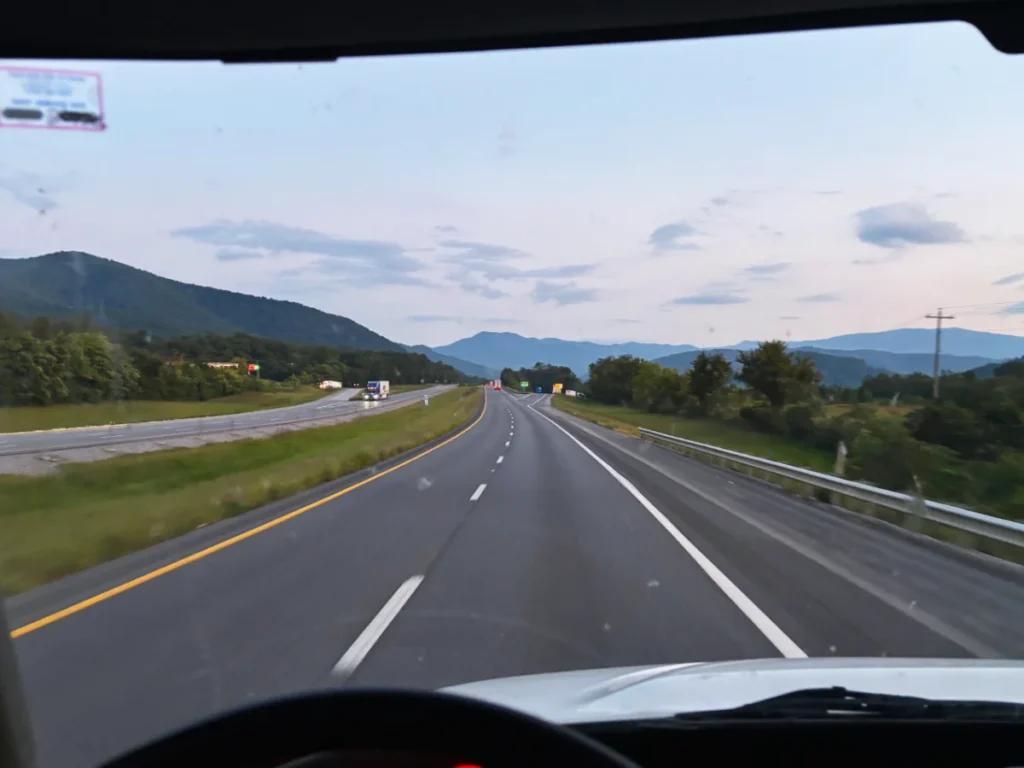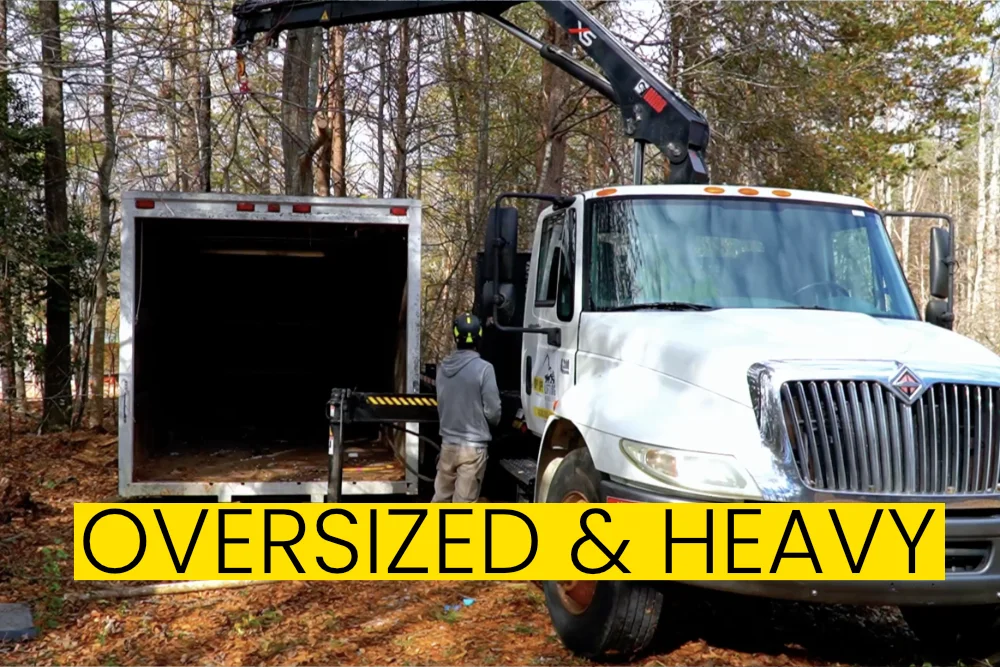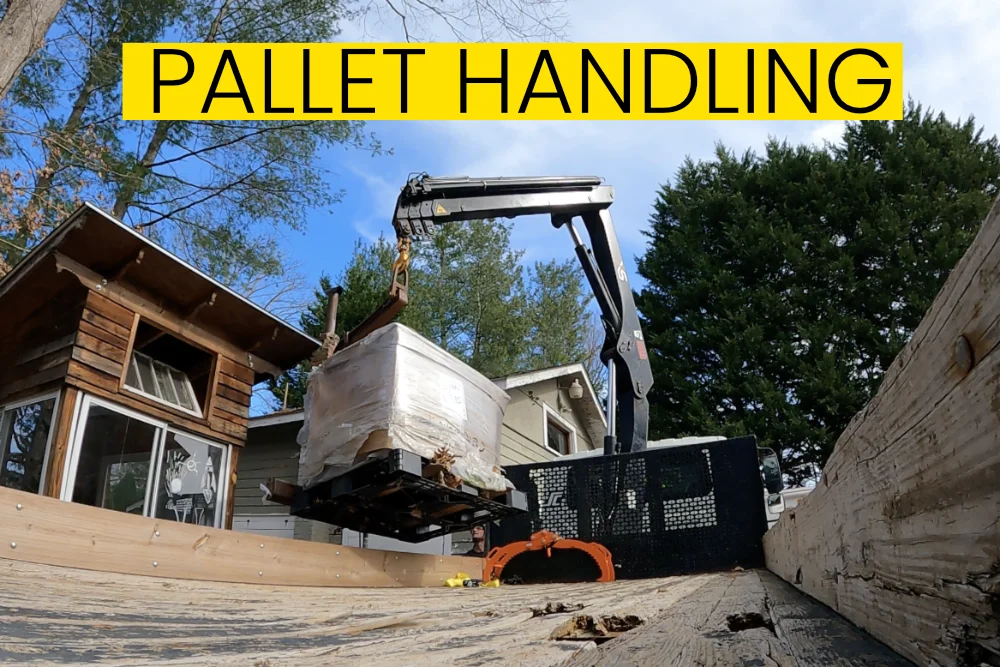Starting a trucking business has some common steps that everyone follows. But not everyone will necessarily follow these steps in the same order.
In my case, I didn’t jump off from the same starting point that others might start from. The inspiration for starting my trucking business was born out of a need in another of my companies.
I needed a somewhat unique set of heavy lifting and transport services in-house, but also recognized a broader market need for the same. Specifically, this need could be met with crane truck services. And so rather than just buying a crane truck under my other company, I decided to launch a separate trucking business that could serve both my existing business and freely market the service to others.
Create a Business Plan and Conduct Market Research
I didn’t exactly skip the crucial first step of writing a business plan for a trucking company. But I didn’t formally check it off the list either. With seven years of experience operating my other company and defining the need and market fit for these particular lifting and trucking services, I had a great head start on understanding the use case, business drivers, and market fit for the type of trucking company I was launching.
With that said, I didn’t spend much time on ironing out the operating expenses and economics. I researched some general guidelines and then quickly sketched out my operations so that I’d know how much to charge and how busy I needed to be to start making money.
I intentionally moved quickly through this exercise because it’s one that I’d usually take too much time mapping out in spreadsheets, continually tweaking numbers and assumptions. But in this case…I decided to just get started.
On the marketing side, I didn’t conduct much formal market research either. Maybe put a better way, I didn’t conducted much academic research – i.e. market size, target demographics, etc.
Instead, I called up everyone I knew that had a business that could use the service I wanted to provide. This included companies that needed to move pallets of products, construction companies that need building materials delivered to job sites, landscapers that pay for rocks and trees to be dropped off for projects, debris and cleanup outfits that need logs and junk hauled away, and pretty much anyone and everyone I could think of.
Based on the interest and offers to engage my newly formed trucking services, I had enough real world interest (market research) to give me the confidence to move forward.
Acquire Equipment
Here is where my steps to starting a trucking company get a bit out of order. For reference, a more formal approach may look something like Obtain Required Licenses and Authority, then Secure Insurance Coverage, and then Acquire Equipment.
Since I was starting the business on a budget and would be purchasing whatever the best used crane truck option was available to me within some geographic radius, I opted to find the equipment first.
Read this article that outlines my decision process for choosing the right truck and equipment for heavy deliveries. It contains some of the criteria and considerations that helped me land on the general vehicle platform, size, capabilities, functions that I needed. I ultimately purchased a 2003 International 4300 with a 16 foot flatbed and truck-mounted HIAB knuckle boom crane. I ended up driving 6 hours from Asheville, North Carolina to near Louisville Kentucky to pick the truck up.
It may not be the perfect setup, but it was the best option available to me within my time frame and geographic range. I’ll know soon enough if I bought the right equipment. Stay tuned.
Because the truck was purchased outright, I don’t need to worry about the added monthly expense of a finance payment. This isn’t an option for everyone, but it’s going to ease the pressures on this new business for me, and for that I’m very thankful.
Secure Insurance
To be more accurate on sequence, I identified the truck and equipment that I committed to buying first, but purchased insurance just before driving it away. So I technically had commercial auto insurance before owning the truck.
But I only got a policy for the absolute minimum that I felt I needed to cover the vehicle on day one. I’ve subsequently learned what insurance coverage is needed for other hurdles, like DOT and state requirements, and have since increased coverage. One example is a minimum BIPD (bodily injury and Property Damage) of $750,000 for interstate transport. Or that was the minimum for my selected combo of operation classification and cargo carried. I understand that coverage requirements would increase if I were to get classified to carry hazardous material for example. And I’m sure there are plenty of other factors that I don’t know or understand yet.
I also learned when purchasing the policy that a minimum of a 500 mile radius was required for the insurer to submit the proof of insurance to the FMCSA system (Federal Motor Carrier Safety Administration). While this is much further than I will drive for interstate transport, increasing the cost of the policy significantly, it was a better cost option than an unlimited radius.
On business general liability insurance, I’m still inching my way forward on it. As I secure contracts that require specific levels of coverage, I’ll increase my policy accordingly. On this piece, I don’t see the need to incur more expenses for work that I haven’t yet secured. I’m sure it’s coming, and I’m praying that it’s coming, as the business grows.
Obtain Required Licenses and Authority
It was quite the learning curve when diving into DOT and motor carrier authority. Since my truck has a GVWR of 26,000 (under CDL or commercial drivers license requirement) and I may not be driving interstate routes out of the gates, perhaps getting authorized for it immediately wasn’t needed. It increased costs by many hundreds of dollars.
However, geographically I’m located in Western North Carolina, which is very close to South Carolina, Tennessee and Georgia. As I launch into the business and secure work from regional companies, I want to be ready to go and able to deliver services. Limiting my capabilities and range when getting started didn’t seem like the best path for me.
Company formation
Regarding the formation of the business, I had a head start on this piece as well. My company, essentially an LLC holding company, has been in operation for many years and has been used for other business activities. So when deciding to launch a trucking company, it was simply a matter of adding an assumed name or DBA (doing business as) with the state once I picked a name for the business and made sure it wasn’t already taken.
Some additional benefits of having an established company with history are: having been in business for over two years, having EIN/DUNS/SAM/CAGE code, having a business bank account ready to go, along with financial books, and so on.
So outside of DOT and trucking business specific requirements, I was only left with branding, creating a website, firing up social media accounts and giving it form through marketing. Since this is an area that I have experience with and enjoy, it was a blast spending time on.
In another article I’ll dig into the marketing steps that I took. For some people, marketing might be the more daunting aspect of getting a trucking business launched. I’ve been using an approach for launching businesses over the years, including platforms, apps, and tools, that I find very easy and effective. I look forward to sharing that approach soon.
Moving Forward
Now it’s time to build the business. While I have verbal commitments for work, it’s time to nail down some contracts. Getting some regular work, and ideally recurring revenue, is mission #1. On that note, I’ve already sketched out several potential revenue streams that I’m excited about.
On the operations side, I have a ton to learn about running and maintaining a truck and hydraulic powered crane. I’m anxious to get a maintenance schedule in place so that I can properly care for my investment and reduce long-term repair bills.
Stay tuned and subscribe for future updates on building this trucking business. If you’re located in the Asheville, NC area and need help lifting and transporting heavy items, please don’t hesitate to contact me for a quote.



